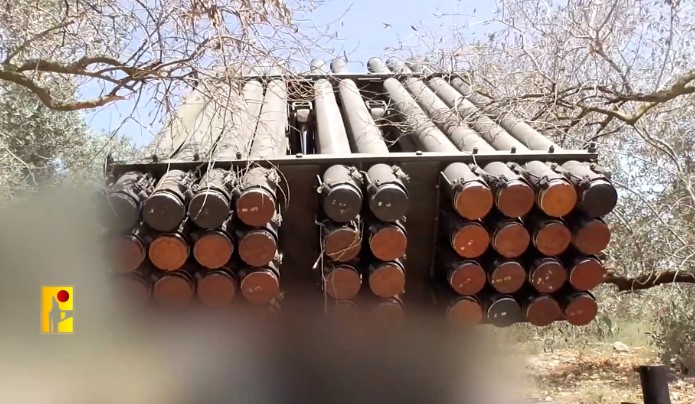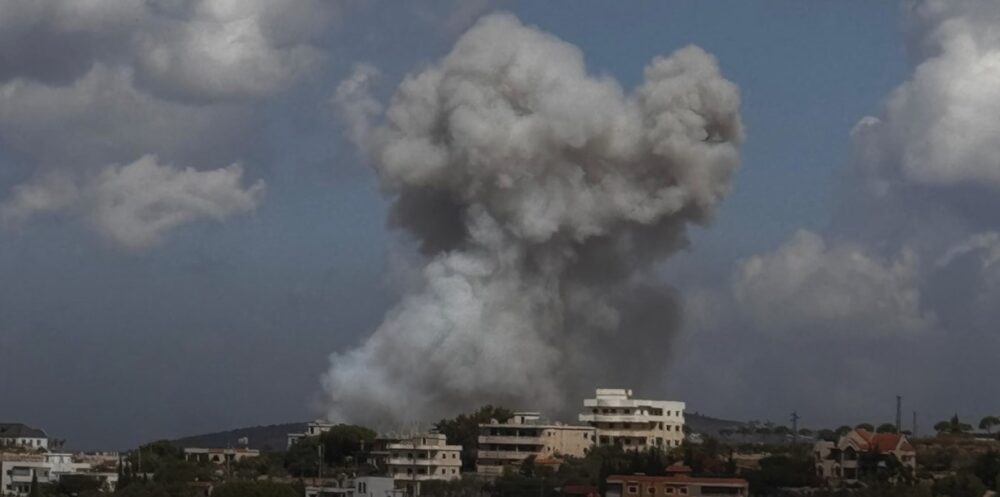(Hai Pa) – Following the escalation in the north and the expansion of targets up to Haifa, Hai Pa brings readers an overview from the media in the Arab world, as of Monday 23/9/24.
Al Arabiya (Saudi Channel):
With the resumption of the bombing of settlements in southern Lebanon and the Lebanon Valley (east of the country), while thick smoke billows from these areas, Israel reiterated its intention to continue its attacks. Defense Minister Yoav Galant said today (Monday) that the IDF is increasing its attacks against Hezbollah, and called on the citizens of Israel to keep calm in the coming days, noting that he expects an escalation in the scope of the shooting across the border.
For fear of hacking the pagers, the Revolutionary Guards prohibit the use of communication devices. After the unprecedented attack that resulted in the explosion of thousands of pagers and radios used by Hezbollah members last week in several areas of Lebanon, the Iranian Revolutionary Guards began to take new steps. Two senior Iranian security officials revealed that the Revolutionary Guards ordered all of their personnel to stop using all means of communication. One of the senior officials noted that the Revolutionary Guards began an extensive operation to check all devices, not just the communication equipment.
In addition to the series of bombings aimed this morning (Monday 23/9/24) against several areas in southern Lebanon and the northern and western valley (east of the country), the Israeli army sent a new threat that also reached the phones of the Lebanese today.
Pilots and executives in the aviation industry and regulatory bodies have warned of the spread of fake GPS signals outside the active conflict zones near Ukraine and the Middle East, confusing navigation and cockpit safety systems and distracting pilots on commercial flights carrying passengers and cargo.
Almanar (Lebanese channel):
The military media of the Islamic resistance in Lebanon – Hezbollah, published an identification card showing the characteristics of the “Fadi 1” and “Fadi 2” missiles, which the organization used yesterday, Sunday 22/9/24, during the attack on the “Ramat David” base and airport, as well as on Rafael Military Industries in northern occupied Palestine.
The “Fadi 1” missile is designed for intensive bombardment with the aim of confusing defense systems, and can be launched from both fixed and mobile positions. It is also used to disrupt supply lines and attack targets in the rear far from the front. The missile is equipped with an 83 kg warhead, with a diameter of 220 mm, a length of 6 meters, and a range of about 70 km. Hezbollah revealed that the missile entered service in 2006 during the July War.
The “Padi 2” missile carries a heavier warhead, weighing 170 kg, which makes it effective against fortified sites, infrastructure and large concentrations of the enemy. It has a caliber of 302 mm, is 6 meters long, and has a range of about 100 km “M. This missile also entered service in 2006 during the July war, as revealed by Hezbollah’s military media.
The Islamic resistance continued its actions against the positions and deployment of the Israeli enemy army on the Lebanon-Palestine border, while supporting the Palestinian people in the Gaza Strip and their brave and worthy resistance, as well as in response to Zionist actions against Lebanon and its sovereignty. In response to the enemy attacks on the southern villages yesterday 22/9/24, this morning the mujahideen of the Islamic resistance carried out two airstrikes using swarms of attack UAVs on new positions of enemy soldiers in the Ether Almanara area and in Yiftah camp, and hit their targets with great precision.
The Islamic resistance in Iraq sent a swarm of drones to the Jordan Valley to support Gaza.
The enemy planes carried out belts of fire as part of the wave of bombings that began a little while ago (Monday 23/9/24) on the cities of southern Lebanon.
Enemy communication: Anti-aircraft missiles were launched at the Air Force planes.
Elanhar (Lebanese newspaper):
The renewal of the intense Israeli bombardment of southern Lebanon and the western Bekaa “Valley”.
Retired Lt. Col. Ronen Cohen referred in a report by “Yediot Ahronoth” to two failed attempts by Israel to locate the location of Hezbollah Secretary General Seyed Hassan Nasrallah, even though he was present at the target location on one of the occasions. Cohen, who served as deputy head of the Intelligence Research Division (Hat) ), said: “There was an opportunity to eliminate him when he appeared for the last time in public at a festive event, in the presence of the foreign and local press, but Israel missed the opportunity.”

The seventh day (Egyptian newspaper):
The Lebanese Minister of Communications, Ziad Makari, received an Israeli threat message, as part of messages distributed by the army to the Lebanese public as part of the psychological war. In a statement published by the Minister of Communications in the Transitional Government in Lebanon, Ziad Makari, it was stated: “As part of the terrifying psychological war waged by the Israeli enemy, a large number of citizens in Beirut and other areas received uniform random telephone messages through the telephone network, instructing them to evacuate their location.”
Israel targets populated areas in Lebanon and claims that they contain weapons caches.


